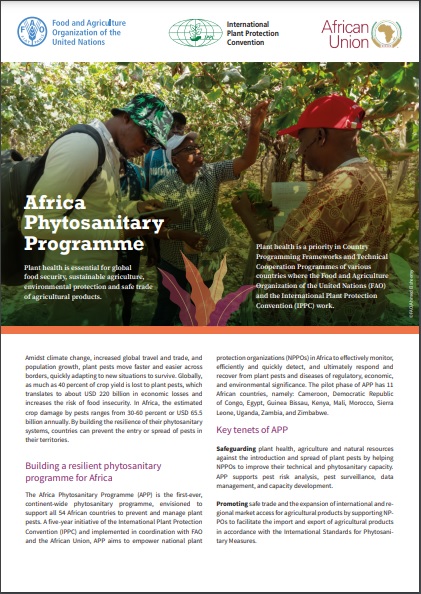
Overview

The Africa Phytosanitary Programme (APP) is an initiative of the International Plant Protection Convention (IPPC) Secretariat and the African Union Commission on Agriculture, Rural Development, Blue Economy, and Sustainable Environment (ARBE). It aims to strengthen the resilience of Africa’s phytosanitary systems against plant pests of regulatory, economic and environmental significance. The APP seeks to boost the technical capacity of Africa’s plant-health professionals by providing training, encouraging collaboration, leveraging resources, and enhancing knowledge sharing to prevent and manage the impact of plant pests in the region.
The APP will be implemented in all 54 countries in Africa. The programme is currently in its pilot phase, with implementation in 11 African countries, namely: Cameroon, Democratic Republic of Congo, Egypt, Guinea-Bissau, Kenya, Mali, Morocco, Sierra Leone, Uganda, Zambia and Zimbabwe.
Amidst climate change, increased global travel and trade, and population growth, plant pests move faster and easier across borders, quickly adapting to new situations to survive. In the process, they destroy crops and wild plants, leaving millions of people food-insecure and shrinking the livelihoods of small-holder and commercial farmers alike. It is possible, but also complex and expensive to manage plant pests once they are established. Early warning and prevention are critical. Yet not all African countries have adequate technical capacity or phytosanitary infrastructure to prevent, detect and manage pests.
Why APP?
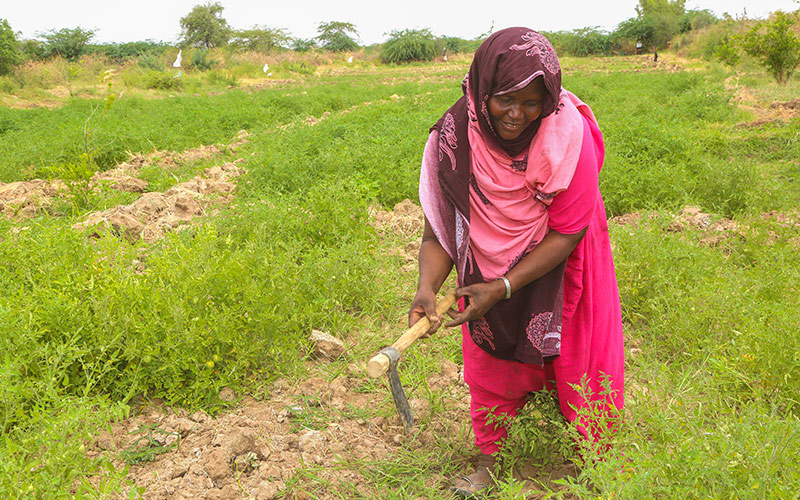
Agriculture and related value chains drive most economies in Africa, contributing about 40 percent of the continent’s gross domestic product and 15 percent of its exports, and employing between 60 and 80 percent of its population. The bulk of intra-African trade (75 percent) is in agricultural products, which will represent a major trade sector in the African Continental Free Trade Area.
However, pests cause crop losses of about 30–40 percent in Africa and millions of dollars are lost to managing and controlling them. From fall armyworm and desert locust to fusarium wilt and fruit flies, pests are a serious threat to food security in Africa and they limit the competitiveness of Africa’s agricultural products in regional and global markets.
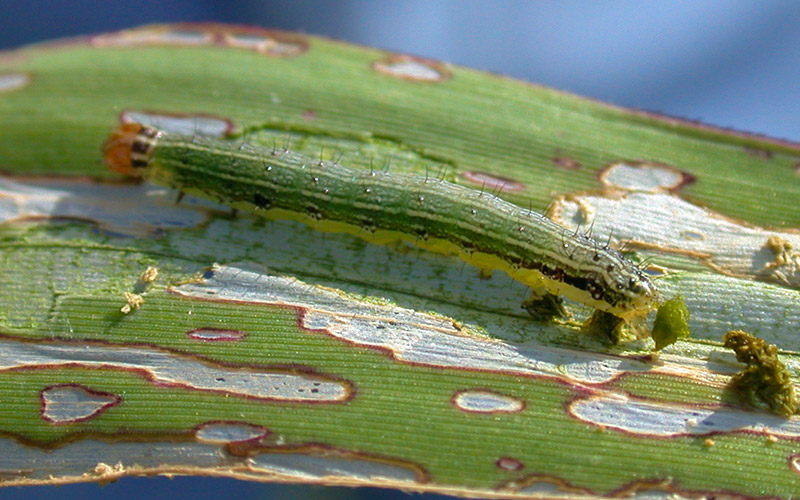
Improvements in the agricultural sector in Africa, such as developing robust early warning and surveillance systems for pests, expanding the technical capabilities of phytosanitary personnel and enhancing the functionality of phytosanitary infrastructure, will improve crop production, support socioeconomic development and boost the trade of agricultural products within and from Africa to the world. The APP will support the improvement of Africa’s phytosanitary technical capacity and infrastructure so that countries are always on the lookout to prevent, detect and contain pest incursions.
The African Union is currently implementing its Plant Health Strategy for Africa (2022–2036), with a goal to “develop and implement a vibrant, robust and practical plant health system for Africa to improve food security and nutrition, improved livelihoods and trade”. The APP provides a timely opportunity to support attainment of this goal, the 2023 Agenda for Sustainable Development, and FAO's strategic objectives, which are anchored in the four betters (better production, better nutrition, a better environment and a better life).
What key outcomes are envisaged?
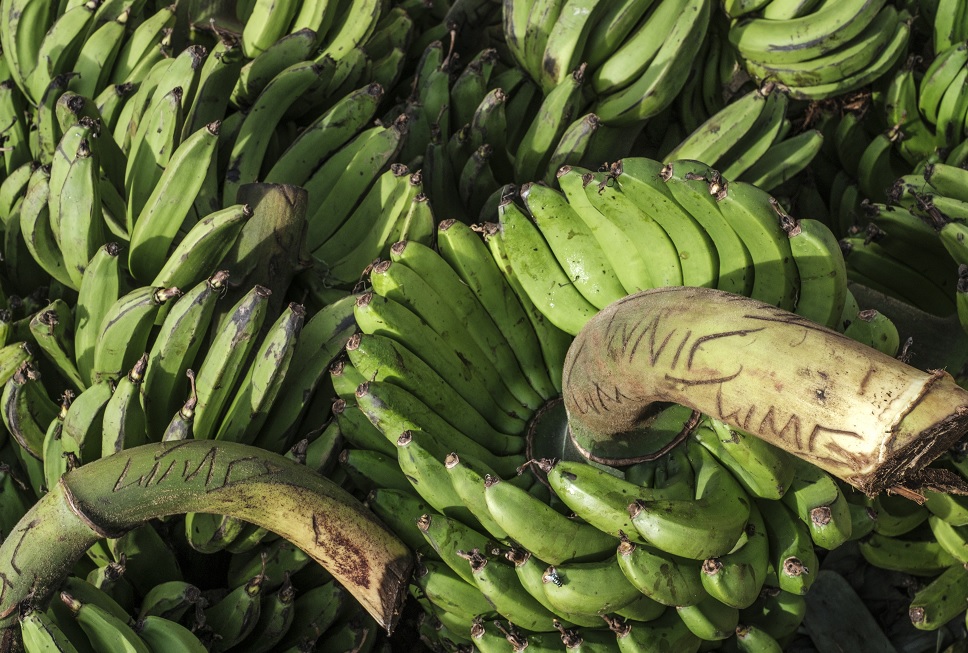
The APP has eight expected outcomes:
- enhanced capacity to manage and prevent the spread of pests;
- improved pest surveillance and early warning systems;
- improved food security and agricultural resilience against invasive plant pests
- harmonized phytosanitary practices, including inspection and other regulatory border activities;
- coordinated regional plant-protection strategies;
- development of technical skills;
- improved trade facilitation and opportunities; and
- enhanced regional collaboration on emerging plant health issues.
The APP approach

The APP is being implemented gradually, starting with a pilot phase and covering the entire continent in five years. Phase one (the pilot phase) will have 11 countries from the five FAO subregions in Africa. Two more countries will be added from each of the subregions in phases two, three and four. In the last phase, the remaining 13 countries will join the APP. With this approach, it is expected that countries and regions will, by the end of the project, have the capacity to address pests that are of significant economic and environmental importance to them and that they will collaborate in a consistent and beneficial manner.
APP implementation strategy

- 54 target countries in Africa
- 11 countries in pilot phase
- 5-year programme
- 8 planned milestones
Partnerships and funding
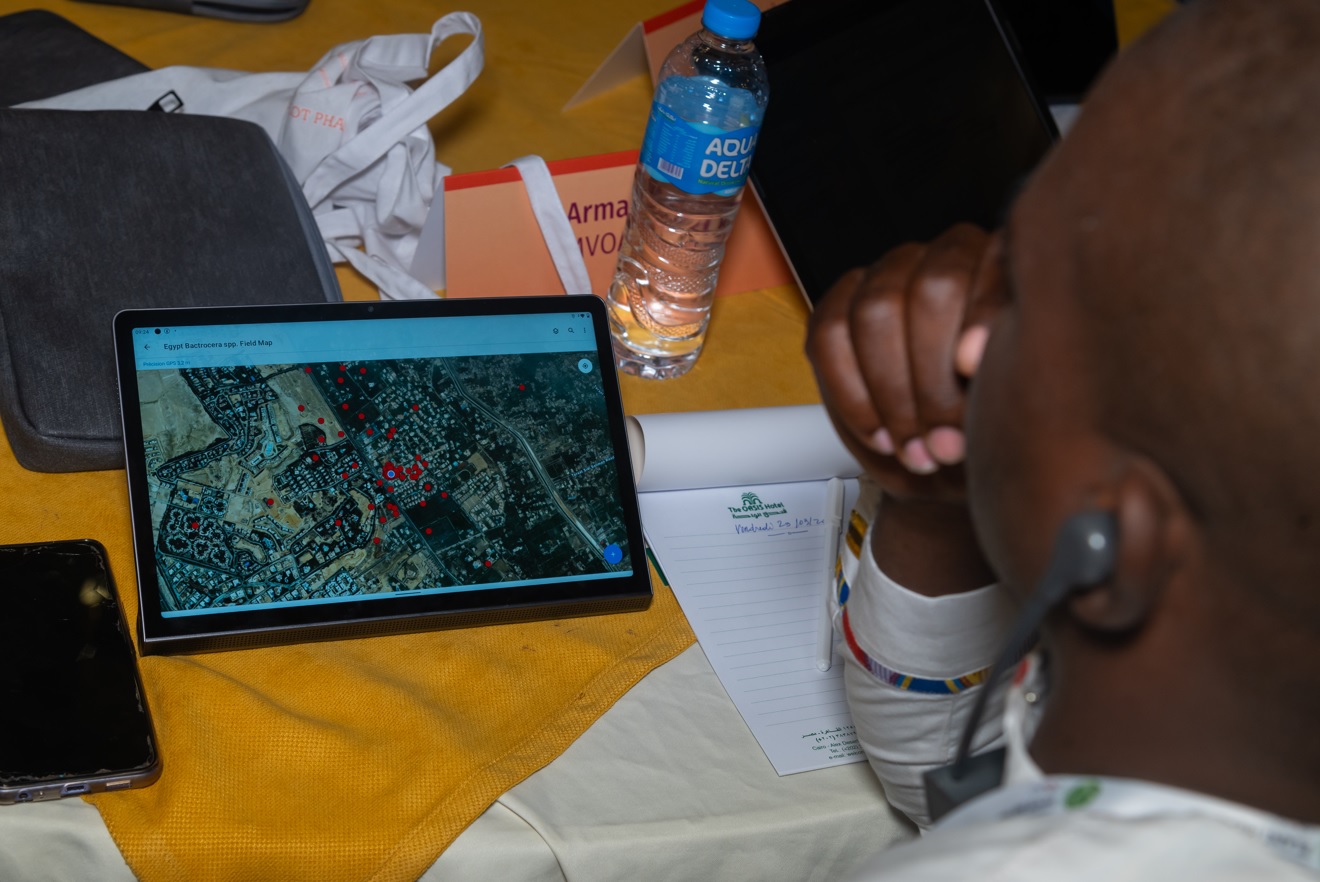
The IPPC Secretariat and the African Union Commission on Agriculture, Rural Development, Blue Economy, and Sustainable Environment (ARBE) are the main coordinators and implementers of the APP.
National Plant Protection Organizations are the national-level partners, responsible for carrying out the day-to-day implementation of the APP in their respective countries.
At the regional level, the Inter-African Phytosanitary Council and the Near East Plant Protection Organization – the regional plant protection organizations (RPPOs) for Africa and the Near East, respectively – as well as regional economic communities and the FAO regional, subregional and country offices will support the work of the APP.
In terms of funding, so far, the United States Department of Agriculture has provided financial and in-kind resources to the programme. The programme welcomes more and diverse technical and financial support.
APP objective
To improve the early detection of pests and to position national and regional plant protection organizations (NPPOs and RPPOs) to prepare for, respond to and recover from plant pests in a timely manner.
Key tenets of APP
Safeguarding plant health, agriculture and natural resources against the introduction and spread of plant pests by helping NPPOs to improve their technical and phytosanitary capacity through pest risk analysis, pest surveillance, data management, and capacity development.
Promoting safe trade and the expansion of international and regional market access for agricultural products by supporting NPPOs to facilitate the import and export of agricultural products in accordance with the International Standards for Phytosanitary Measures.
Training
News and Events
Photos
See photos of the "Train-the-trainer" workshop
Presentations
See the APP Updates
Once you open the presentation use the right arrow '>' of the keyboard to change slides

